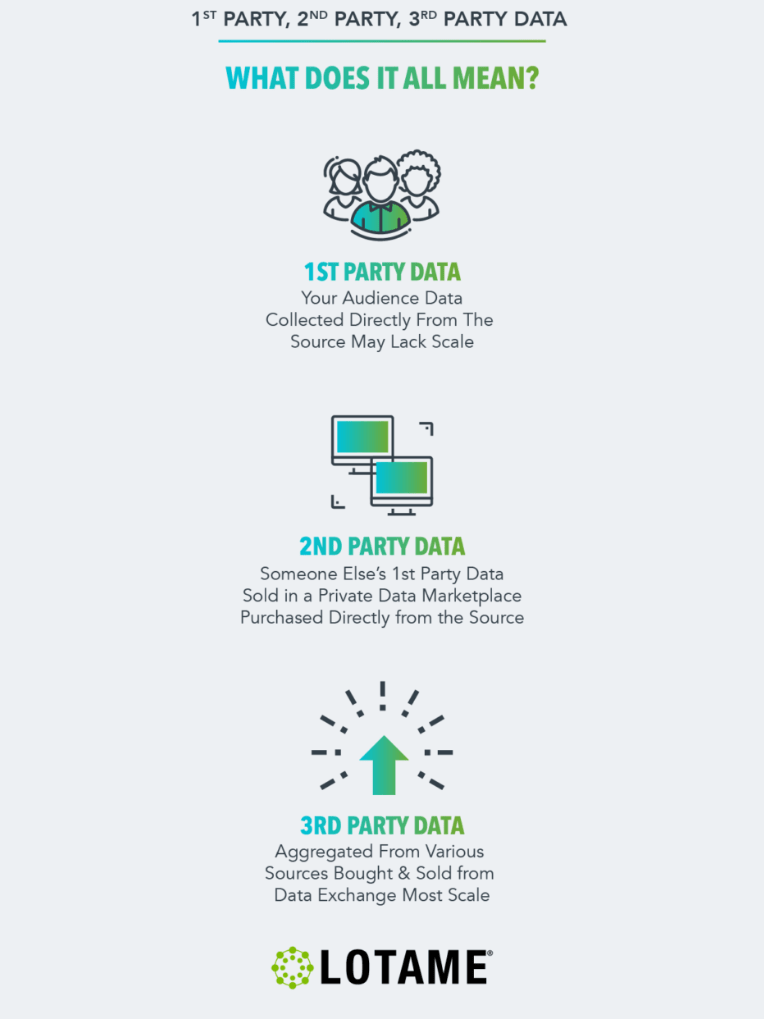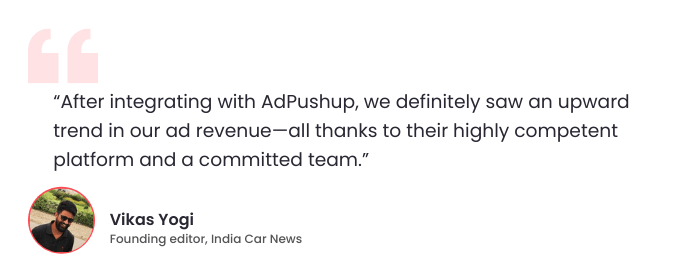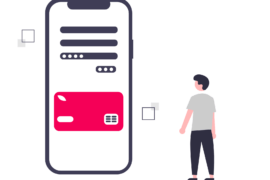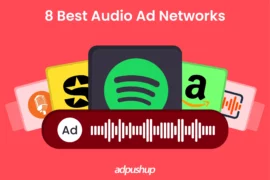Publishers are currently facing a plethora of challenges that are threatening their revenue generation models and growth objectives. On one hand, Google has decided to sunset third-party cookies. On the other, CPMs and revenue have flatlined due to COVID-19’s impact on global ad spend. Then there are emerging privacy laws such as the CCPA, GDPR, and LGPD, which are disrupting existing ad tech operations.
Inadvertently, the first solution that publishers turned their attention towards was first-party data. It makes sense in the long run as direct website data can help in building better audience relationships and initiating direct deals.
However, second-party data perhaps does not get the attention it deserves. In this post, we’ll cover the benefits of second-party data and its value for publishers.
What is Second-Party Data?
Most people in ad tech are at least vaguely aware of the three types of data: First-party, second-party, and third-party data. Let’s recap their key differences.
- First-party data is collected directly from users by a company. In advertising, a publisher’s website collects this data using cookies, pixels, forms, and more. And then CRM and analytics software are used to process it for better understanding. Publishers own this data, making it the most valuable source available to them.
- Third-party data is aggregate first-party and second-party data bought and sold at scale via data exchanges. It is primarily used to run targeted ads and retargeting campaigns. This data is collected using cookies from a variety of sources like websites, mobile applications, etc. Third-party data is often organized using a data management platform.
- Second-party data is essentially someone else’s first-party data that has been segmented, bundled, and sold in private data marketplace. It is highly accurate as the publisher collects it directly from their website. Generally, marketers collect this data to improve a brand’s campaign performance.

Benefits of Second-Party Data for Publishers
1. More reliable and accurate
Second-party data is more reliable than third-party data. The latter is available for use for everyone and can be purchased in bulk through a data provider, therefore lacking the depth or the insights that first-party/second-party data offers.
With second-party data, buyers purchase exactly what they need. Adding to that, this is more accurate as it is first-party data collected directly by a publisher.

2. Better scalability
Data is only valuable as the insights it can provide. Since third-party data is available to everyone, there is very little competitive advantage it offers. First-party data is valuable but the collection is limited by the publisher’s own audience and traffic.
Second-party data defeats both in terms of scalability. It’s organized, exclusive to the buyer, and can be immediately used for effective marketing strategies.
3. Privacy compliant
When privacy-laws such as GDPR and the CCPA came into being, publishers immediately started looking for privacy-compliant methods of collecting data. Second-party data tops third-party data here, since it’s somebody else’s first-party data, collected after recording consent. The buyer in this stage is more aware of how the data is collected and what level of user consent was obtained at the first stage.
Publisher cannot collect users’ data unless users voluntarily agree to sharing it. This is achieved by adding privacy-compliance pop-ups on the website and landing pages. Once a user agrees to sharing personal data, using that data becomes legitimate.
4. More valuable
Imagine you have a meal-planning website and are planning on running a campaign. Since meal planning is a potentially millennial concept, you will need data from websites that collect trends on millennials’ shopping needs, diet requirements, etc. This data will immediately contribute to the success of your campaign.
Additionally, the data you collect from your website will be similarly valuable to another publisher or marketer. Moreover, it will fetch you greater revenue in return.
5. Improved ad targeting
As mentioned above, for publishers, it isn’t always about selling your first-party data. Sometimes they can also buy second-party data from another publisher and use it for targeted advertising. Combining their own first-party data and second-party data from another publisher can be an extremely powerful strategy.
How Can Publishers Buy/Sell Second-Party Data?
Second-party data is bought from a website owner and there is no other way to obtain it. The buyer in this case can be an advertiser or publisher. Publishers can buy another publisher’s data for additional insights. For example, a travel website can buy first-party data from an airline website to target consumers better.
How can publishers sell or buy second party data? The answer to that is second-party data marketplaces. Second-party marketplaces enable seamless and transparent exchange of data between the buyers and sellers on a single platform.
Also read: First-Party vs. Third-Party Cookies: What’s the Difference?

Here are some of the leading second-party data marketplaces:
Adobe Audience Manager
Adobe is already a well-known name in the computer software industry. Adobe Audience Manager leads in terms of providing an efficient second-party data marketplace.
Lotame Data Exchange
When it comes to data exchange/storage/analysis needs, Lotame is a popular choice. Lotame Data Exchange connects anyone looking to sell or buy this data to their preferred choice.
Salesforce Audience Studio
Salesforce allows users to access reputed second-party data sellers through its customer data platform marketplace. Data sellers are anonymized in the marketplace, so there is no threat to reputation.
LiveRamp IdentityLink Data Store
LiveRamp is an admired name in the identity resolution market. Their Data Store allows seamless trading of data in the second-party data marketplace.
Closing Thoughts
Publishers should recognize the potential of their first-party data and sell it in the form of second-party data to generate more revenue. Additionally, they should also consider buying it to improve performance of their own campaigns. In the wake of privacy laws and the cookie apocalypse, it’s a smart way to create more value.
Additional Readings
- GDPR is leading to more second-party data deals
- How Publishers Can Use Second-Party Data for More Ad Sales

Shubham is a digital marketer with rich experience working in the advertisement technology industry. He has vast experience in the programmatic industry, driving business strategy and scaling functions including but not limited to growth and marketing, Operations, process optimization, and Sales.







